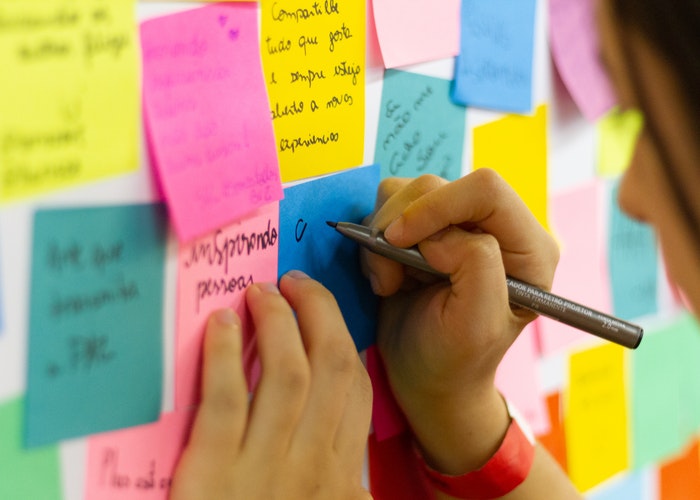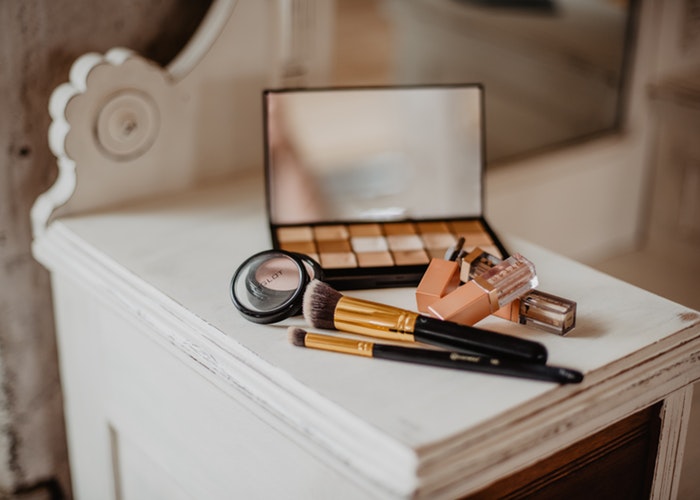How I Maximized My Student Loan Payments & Put 1/3 Of My Income Towards Debt

I was the first in my family to get a college degree. Even though my parents couldn’t help me navigate college life, they could help me understand the debt part:
If you don’t pay off those loans ASAP, you will die.
Maybe they weren’t quite that dramatic, but that was the gist of it. And with student loan debt currently at $1.5 trillion in the U.S., my parents definitely had a point about being so wary.
Student loan debt is a bit like a hydra, the mythical Greek snake monster with the regenerating heads. Except instead of snake-heads growing back, you’re dealing with interest rates and rapidly growing principal loans. And they’re all equally unpleasant.
With student loan debt, I have found you can’t snip away at it with a few minimum monthly payments. You need to be strategic about your payments, ensuring that your money is taking that monster down at its core.
On average, about a third of my monthly income went to my student loans. The other two-thirds went to living expenses & rent for my studio apartment. By the end of 2018, I paid off my loans in full. It took one full-time job and 13 months of calculated payments to make that happen.
These are the steps that I followed:
1. I paid off my small three-digit loans ASAP.
These are the “cute” small loans below one-thousand dollars. I call them “cute” because they seem harmless—small amounts of money that helped pay for some overpriced textbooks, food, and other school necessities. But these loans can cost a lot in a few years.
Let’s take a look at a small loan of say, $600. Let’s say it has a federal interest rate of 5.05% and I plan to pay it off in ten years.
If I paid off $10.00 each month for ten years, my total payoff amount would be $691.88.
If I paid off $50.00 each month for one year, my total payoff amount would be $616.82.
If I paid off $100.00 each month for seven months, my total payoff amount would be $608.91.
Obviously, the bigger payments on this loan, the better. Interest is minimized — the difference between a few dollars and almost a hundred dollars. The loan is paid off quicker. And I was helping Future Me save money. Plus, there was also the immediate gratification of knocking out an entire loan.
2. I paid off my accrued interest ASAP.
Now for some crucial, strategic weeding — paying off the interest that’s already accrued. For some of my loans, the interest had already grown by several thousand dollars. It was crucial to pay off that interest quickly and consistently.
Interest is swift and terrifying, especially with interest rates as high as 14%. For five-digit loans, interest can bury them completely, growing so big that payments don’t even go to the loan anymore. I’ve heard horror stories of people who made $1,000 payments, only to have most of that money eaten up by interest. Interest is like the armor on a student loan — unless you remove it, payments won’t make a scratch on the student loan.
3. Next, I paid off my largest individual loan.
After I took care of my three-digit loans and my interest, I paid off my largest loan. I had multiple loans with varying amounts and interest rates, but there was one particularly daunting one that seemed to grow much larger than the others. Whether the largest loan is $5,000 or $25,000, paying it off early is important to knock out student loan debt. It’s also crucial to preventing a hefty amount of interest from growing. I was helping Future Me save thousands of dollars.
4. I then paid off my loans in order of highest interest rates to lowest.
Once the largest individual loan was taken out, I targeted my loans with the highest interest rates. These loans weren’t necessarily the highest amounts, but I wanted to prevent more interest from accruing. Why owe the loan servicer more money than I had to?
5. My Rule of Thumb: I always paid more than the minimum payment if possible.
If I had a payment to make, I always tacked on an extra $10 or $20. That extra money helped dig at my principal loan amounts and future interest. I was also extremely fortunate enough to make a few large four-digit payments that significantly cut down my loans.
On December 31, 2018, I was relieved to make my final payment that brought my student loan balance down to $0.
There are, of course, multiple strategies for tackling student loan debt (like the famous “Debt Snowball Method” by Dave Ramsey). But for myself, I found that the more direct, aggressive approach was best. After all, student loans are monstrous. Not cute.
Useful Tools:
- http://www.finaid.org/calculators/loanpayments.phtml
- https://www.nerdwallet.com/blog/loans/student-loans/student-loan-calculator/
Catherine Dang is a writer and editor based out of Minneapolis, Minnesota. When she’s not complaining about the snow, you can find her on Instagram @dangitcat.
Image via Unsplash
Like this story? Follow The Financial Diet on Facebook, Instagram, and Twitter for daily tips and inspiration, and sign up for our email newsletter here.




